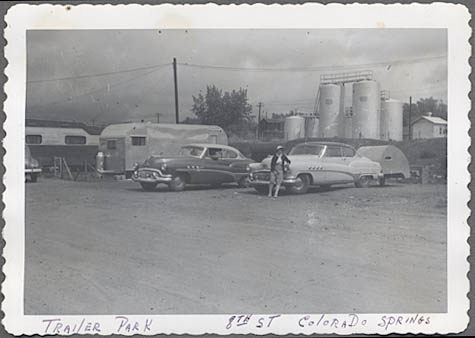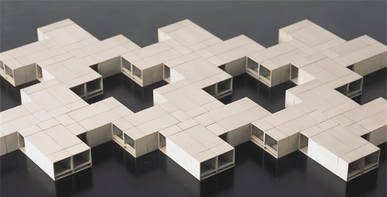Schwarz
View current page
...more recent posts
Space units for residential buildings, 1961
Design: Bernd Meurer, Herbert Ohl
Photo: Ernst Fesseler
© Ulmer Museum/HfG Archiv
im not sure how pure an experience people expect in their music listening experience.
is it a matter of a club surviving or not -or- crass profiteering? i suspect in the case of places i would go to its about survival.
Whoo, hoo, yeah
Whoo, hoo, yeah
Shell adore you and shell floor you
With her wisdom and her vision
And youll love it and think of it
Till you lose all intuition
Come on
She can move you and improve you
With her love and her devotion
And shell thrill you and shell chill you
But youre headed for commotion
And youll need her so youll feed her
With your endless dedication
And the quicker you get sicker
Shell remove your medication
Get the firehouse
cause she sets my soul afire
Get the firehouse
And the flames keep gettin higher
Shes like bad weather but it seems so good
Youd never leave her but you know you should
Shes like bad weather but it seems so good
Youd never leave her but you know you should
Ooh
Get the firehouse
cause she sets my soul afire
Get the firehouse
Whoo, hoo, yeah
Get the firehouse
Whoo, hoo, yeah
materialicious
corn-gratz justin on your new materials blog
Lancaster County, Penn., located in the southeastern corner of the state and within hours of New York, Philadelphia, Baltimore, and Washington, D.C., is an area destined for growth.
Today many parts of Lancaster County are becoming theaters of conflict between large, new residential developments and centuries-old farms. Often, money trumps such intangibles as history, character, and scenery. How can family farms containing dozens of acres coexist with more and more residential development?
With help from nonprofits and municipal planners, Lancaster County's small farms are surviving as wide gaps in the suburban landscape
Stop Faking It
Germany's Museum Plagiarius showcases knockoffs. The founders are determined to protect small designers from counterfeiters that stifle innovation
by Rachel Tiplady
Caveat emptor, let the buyer beware, warns one of the oldest sayings in the book. That's also the message behind a new museum of counterfeit goods, which opens to the public on Apr. 1. The Museum Plagiarius, in the German city of Solingen near Cologne, will permanently exhibit some 300 original products together with inferior rip-offs produced by unscrupulous companies out for a quick buck.
Its message: Plagiarism kills innovation. "Companies have spent time and money making these products; if someone steals that idea, then they are also stealing the incentive to invent," says the museum's curator, Christine Lacroix, who is also managing director for nonprofit lobby group Aktion Plagiarius, which runs the museum and offers design companies legal advice and regular workshops to help fight against organizations that counterfeit.
to fix/fill chips in a tub
bungalow black box
mercedes wood block print $65
In some sense, the iconic photograph of Rosa Parks recreating her quiet act of rebellion on a bus in Montgomery, Ala., belongs to every American. But as a practical matter, it belongs to Bill Gates.
Anyone wanting to use that image in a book or on a Web site must first license it from Corbis, a corporation founded and owned by Mr. Gates, who is better known for starting Microsoft. The photo is among the 11 million prints and negatives in the legendary Bettmann archive, which Corbis bought in 1995.
Since that first purchase, Corbis has spent tens of millions of dollars acquiring image collections and other companies, hired more than 1,000 people and set up two dozen offices worldwide. Although Corbis says it brings in some $250 million a year in sales, it has yet to turn a profit.
Now the company is shuffling its top executives as it takes on new challenges, building up a business in rights management and plotting its response to the rise of low-cost online photo services that threaten to undermine its lucrative stock photo sales.
The company plans to announce Tuesday that Gary Shenk, the president, is being made chief executive as well. Mr. Shenk, 36, is an expert in rights licensing who has risen rapidly through the Corbis ranks since he was hired in 2003 from Universal Studios, where he started a small licensing unit.
texas wear subset of melmac
solar pool heater
from off-grid
calling adam kalkin
They first announced they were taking orders in January of '04--just over three years ago and yet with all this publicity we never heard anything about one being built. However, Adam Kalkin's website currently says there is a 6 month waiting list and there was another article just last month
crumbly chumley's
AIA top 150 american buildings
velvets 1966 super8 at a high school in nj
Fugs Tuli Kupferberg Sings the Bum Song and explains

Judd
lived in new york. began making furniture in 1973, when he moved from to marfa, in texas. the reason was practical, as he couldn’t find anything suitable locally – the first pieces he executed were beds for his children. the early furniture was executed with plain planks of pine. ‘I figured it out so I could tell the lumberyard what I wanted – four pieces, five feet long, three pieces, two feet long – and they would cut them for me. they wouldn’t do too many and they wouldn’t do anything fancy. they would just chop it up. for a long time the basic module was the width of the wood: 1x12s, 2x12s. for some racket of the lumberyards, the twelve inches were really eleven inches. most of the new work is in metric measurement.'said donal judd. later he worked in sheet metal. the wooden pieces are all still made by one fabricator who worked with judd and made the furniture to his specification. the metal is made of aluminium with a choice of 20 different coloured enamels. some pieces also come in copper which is particularly spectacular.
pegboard book shelves
tim hunkin's the secret life of machines

